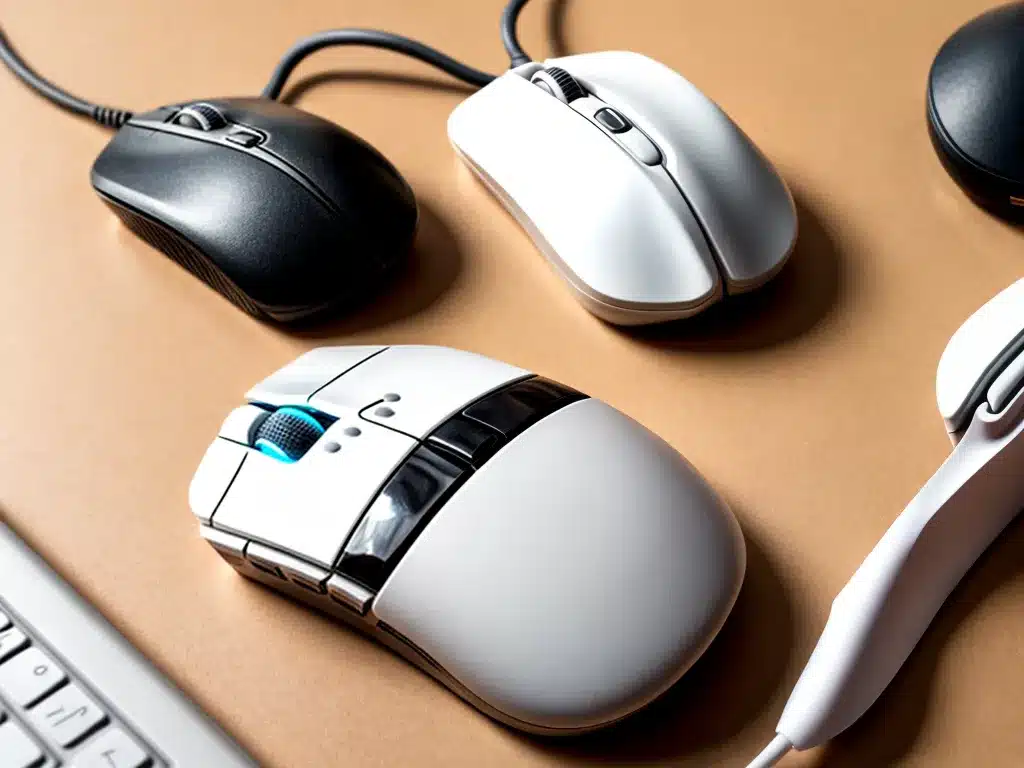
Connecting a wireless mouse to your computer should be simple, but sometimes issues arise that prevent the mouse from working properly. Here is an in-depth guide on troubleshooting and resolving the most common wireless mouse connectivity problems.
Make Sure the Mouse is Properly Paired
The first step is ensuring the mouse is actually paired and connected to the computer. Here are some things to check:
-
If the mouse uses a USB dongle, make sure the dongle is fully inserted into a USB port on your computer. Try different ports if needed.
-
Check if the mouse has a connect button. Most wireless mice have a button on the bottom that must be pressed to initiate pairing. Press and hold this for a few seconds.
-
Look for a pairing button on a wireless mouse receiver if using one. Press that as well.
-
Search for the mouse name on your computer’s Bluetooth settings if connecting via Bluetooth, and make sure it shows as paired.
-
Check if the mouse has an on/off switch and that it is turned on. The switch is often located on the bottom.
Properly pairing and connecting is the first step to get the mouse actually communicating with the computer.
Replace Batteries
Wireless mice require batteries to operate. Dead or weak batteries are a common reason a wireless mouse stops working.
-
Replace batteries with new ones if existing ones are over 6 months old. Use name brand alkaline or lithium batteries.
-
Check battery orientation to ensure they are inserted correctly.
-
For rechargeable mice, make sure batteries are fully charged.
Fresh batteries often resolve quirky mouse behavior like lagging or poor response.
Update Mouse Drivers
Outdated, corrupt, or missing drivers can affect wireless mouse functionality. Try updating drivers:
-
For a USB wireless mouse, update USB drivers through Device Manager.
-
For a Bluetooth mouse, get the latest Bluetooth drivers for your adapter.
-
Download the mouse manufacturer’s software which often automatically installs required drivers.
-
On Windows, search for updates in Device Manager or use a free driver updater tool to download the latest mouse drivers.
Updated drivers ensure optimal connectivity between the mouse and computer.
Adjust USB Power Settings
For wireless mice using a USB dongle receiver, insufficient USB power can cause connectivity problems.
-
Try plugging the dongle into a rear USB port directly on the computer instead of through a hub.
-
Disable USB selective suspend in Power Options if available.
-
Uncheck ‘Allow the computer to turn off this device to save power’ in Device Manager for the USB device.
-
If issues persist, use a short USB extension cable to move the dongle receiver closer to the mouse.
Adjusting power management can provide stable power to the wireless receiver.
Check for Interference
Wireless mice can encounter interference from other wireless devices using the same frequency band:
-
Position the mouse 3-6 feet from the receiver to avoid close-range interference.
-
Toggle off nearby wireless devices like routers, speakers, or headsets to isolate interference.
-
Try a different USB port farther away from other wireless devices.
-
Check if your wireless network channel conflicts with the mouse and adjust if possible.
Minimizing wireless congestion from other devices improves wireless transmission between the mouse and computer.
Reset Mouse and Receiver
If all else fails, resetting the mouse and receiver often clears up lingering connectivity problems:
-
Some mouse receivers have a reset pinhole – push a pin in for a few seconds with mouse on.
-
Remove mouse batteries for 60 seconds, then re-pair the mouse to the receiver.
-
Forget the mouse in Bluetooth settings, then re-pair if using Bluetooth.
Resetting clears out any corrupted settings or faulty configurations that may disrupt the wireless link.
With good batteries, updated drivers, interference-free transmission, and resets as needed, most wireless mice connectivity issues can be eliminated for smooth sailing. Let the advanced tracking and scrolling begin!












